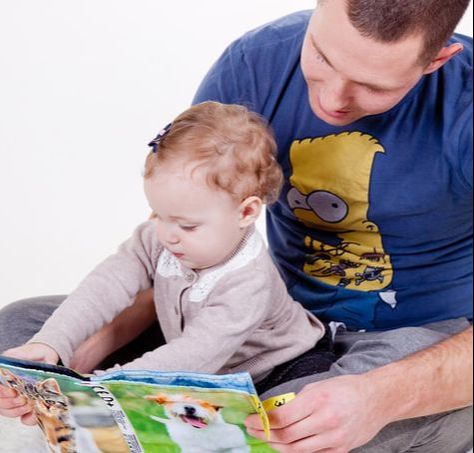|
Parents often dream of cuddling up with their little one and reading through their first story book. But in reality, many children are initially far more interested in pulling books off the shelf, piling them up or throwing them around than sitting still while you read through one!
Fortunately, introducing and exploring books and stories together with your child can be easy and fun, with a few simple tips to get you started: 1. Create a comfortable atmosphere for storytelling. Turn off TVs, iPads and other electronic devices (phones on silent!). Create a special setting for both of you, whether cuddled up on the couch, cushion or bean bag, snuggled next to them in bed, or sprawled out on the play-room rug. 2. Don’t expect them to sit still or listen to you for long! Don’t get discouraged or assume something is wrong if you get the book out, open up to start reading, and they are 'done' after 30 seconds or one page. In fact, in the initial phases, don’t worry about reading the book at all. Creating the atmosphere and inviting your child to associate books with fun and curiosity should be your initial target. 3. Use ‘board books’ or books hard to rip or tear. There are plenty of ‘toddler-friendly’ books made from thick/stiff cardboard, textiles and other not so easily ripped materials to allow for enthusiastic handling. Give your child allowance to handle the book, flip through it over and over, be a little rough or play around with it. In the beginning, it’s more important that they engage with books, rather than how they engage with them… that will come! 4. Don’t aim to read the book. Don’t worry about reading the words or following the story narrative of the book. Engage and interact with the book at the level that your child will enjoy. This could be looking at the pictures and talking about them or making noises associated with machines, animals or characters in the book: 'Oh look, what’s this? It’s a car!' 'Oh, it’s windy! Whoooooshhh!' 'There’s a cow, Moo!' 'Choo-choo, it’s a train!' or even just sitting together and making a game of flipping the pages: 'What’s over the page? 1,2,3… turn it over!' 5. Introduce a toy or prop to bring characters and stories to life. Choose a book with a character that you can match with a small toy or object. For example, if the main character is a dog, you can use a small plastic dog figurine or plush toy dog and use that toy to ‘act’ out an activity or part of the story (for example if the dog is jumping in the book, you can make your toy character do the same). Again, don’t worry about sticking to the narrative or getting through the whole book. If you play with one or two pages before your child gets distracted or wants to do something else, that is not a problem. It all counts. 6. Don’t look for feedback or linear progress. If you get through the whole book one time, and next time 3 seconds is all you get, that's normal. Children rarely demonstrate their progression or growth in a linear or predictable way. Expect the unexpected and don’t be discouraged. Everything you do counts in the long run to the overall target of creating joyful interaction with books. So keep going, and most importantly, have fun together!
10 Comments
|
Andrea Hollandis always learning and curious - just like the kids (and adults) at her clinic. As a Mum and speechie, Andrea knows that supporting your kids growth and confidence can be unpredictable and overwhelming. In her blog, she offers tips, insights and information to facilitate more ease and joy for you and your child, whatever their learning and development journey may be! Archives
July 2019
Categories |


 RSS Feed
RSS Feed